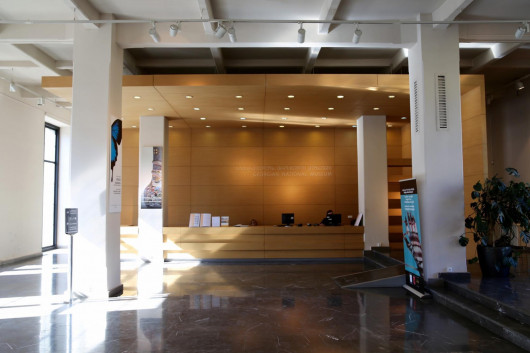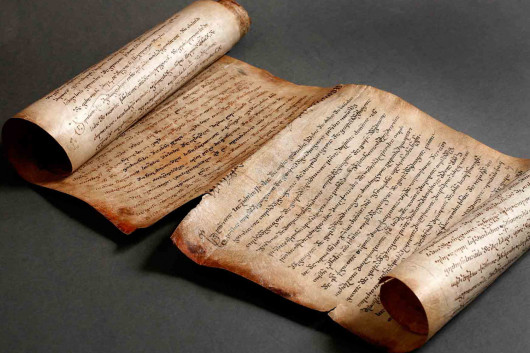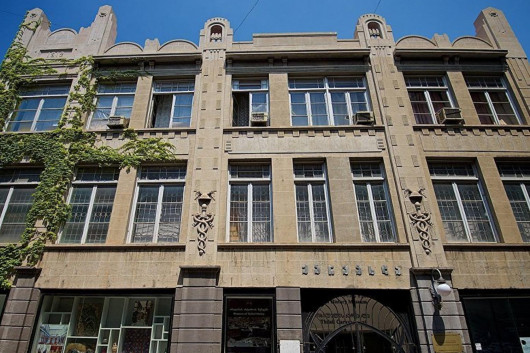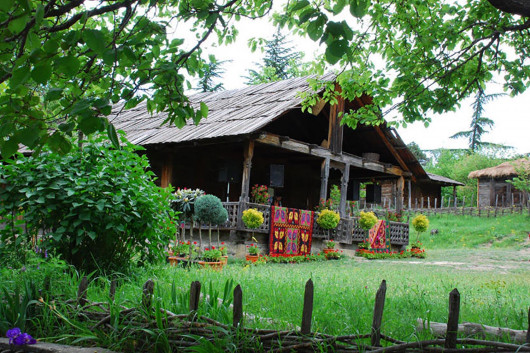The Georgian National Gallery
Search
Popular Museums & Galleries
The Georgian National Gallery
Gallery, Art gallery
Working Hours: 10:00 - 18:00
Holidays: Monday and public holidays
Tbilisi, 11, Rustaveli Ave. - See On Map
The Georgian National Gallery was established in 1920. Dimitri Shevardnadze, a well-known Georgian painter, contributed significantly to the development of the gallery. Since its foundation, the gallery has served the development of Georgian fine arts.
The gallery itself was built based on a resolution from Russian tsar in 1888. The building was originally allocated as a Russian military and historic museum, known as the Temple of Glory, intended to showcase the power of the Russian Empire in its colonies. Artifacts from the Temple of Glory were evacuated during the First World War, putting an end to the museum's first phase.
The first exhibition of the National Gallery, as it was re-established under independent Georgian Menshevik rule, dates back to October 1920. The exhibition policy of the gallery was broad in scope, presenting Georgian and foreign works from all time periods and artistic movements to the public.
The first exhibition was the fruit of Dimitri Shevardnadze's hard work collecting as many fine art works as were available in Georgia at the time. The exhibition included 18th and 19th century Georgian portraits (from the so-called "Georgian School"), Russian, Western European, Iranian and contemporary Georgian paintings.
Thereafter, the Gallery kept a reserve collection profound in its breadth and quality. As a result, the National Gallery could function as a museum of fine arts while simultaneously supporting its primary mission of promoting contemporary fine arts.
However, the building had only limited space and the majority of works could not be exhibited, leaving painters without valuable space to present their works to the public. To remedy this, the Gallery developed a reorganization plan. Director Dimitri Shevardnadze's attention shifted to the Metekhi Castle Fortress, a historic venue considered it most appropriate to house the National Gallery.
In 1933, the municipal prison was moved from Metekhi to Ortachala, and Metekhi's historic building was delivered to the National Art Gallery's board of directors. The whole treasury of the National Gallery was placed at Metekhi in 1934, at which point the National Gallery re-opened to the public. Under Soviet rule, the National Gallery took the state's cultural policies and turned them in the direction of the fine arts.
In March 1988, the museum-exhibition union "National Gallery of Artwork" was established by the board management of Artists' House, which featured exhibition halls for contemporary Georgian art. The union's central institution was the Modern Art Museum. The exposition was placed at the National Gallery, which required enlargement and reconstruction in order to house it. The first floor, which was previously dedicated to administrative space and collections storage, was converted into a more accessible exhibition gallery.
An exposition of Modern Georgian took place on September 18th, 1989. But as a result of political instability in the 1990s, the Modern Art Museum had to cease operations.
In 2007, the National Gallery joined the Georgian National Museum complex. The main gallery building was once again renovated. New, modern exhibition space was added to the gallery, encompassing eight exhibition halls, a restoration laboratory, temporary exhibit reserves, training space, and a gift shop, all implemented by the Portuguese Architectural company "Ainda Arquitectura". Such well-designed and unique exhibition halls can be found nowhere else in the South Caucasus.
Nowadays, the Gallery is one of the central exhibition spaces of the National Museum, where one can find temporary exhibitions such as "Georgian fine art masterpieces of the early 20th Century".
Additional information
- Location: Tbilisi, 11, Rustaveli Ave.
- Working Hours: 10:00 - 18:00
- Holidays: Monday and public holidays
- Guide: Guide service is delivered in Georgian, English, German, and Russian languages. In case of guided tour, please contact us in advance - 2 15 73 00
- Saving clothes and luggage: Cloakroom service is free for the following items: Coats and jackets Umbrellas Travelling bags and backpacks Motorcycle/bicycle helmets Musical instruments Handbags (maximum size A3) can be brought into the museum. In case of questionable items , a decision will be made by authorized personnel. Following items cannot be checked: Money, documents, and identification documents Check cards and credit cards Valuables Handbags In case of violating the aforementioned policy, the Georgian National Museum is not responsible for the loss or damage of any items. Visitors should collect their belongings by the end of the working day. After the museum closes all the items left behind are considered lost. In case of loss of checked items, authorized personnel should be notified immediately.
- Photo Video Capture: Taking photos of the museum building and permanent exhibitions for personal purposes are allowed without using flash and tripods Photo and video are strictly prohibited at temporary exhibitions Photography for commercial purposes is subject to prior negotiation and written permission issued by the museum administration and communications department Taking photo or video featuring GNM employees is a subject of prior negotiation with the museum administration
- Tickets: Adults 7 GEL; Students 1 GEL; School Children 0,5 GEL; Friends of Museum (become a member) Free; Children under 6 Free; Free to: ICOM members, "Culture Card" owners, museum employees, people with limited abilities, internally displaced persons (IDPs), socially unprotected persons. Note: visitors receiving special benefits or free admission privileges should present relevant documents
- Phone: + (995 32) 215 73 00
- E-mail: info@museum.ge
- Web Page:





